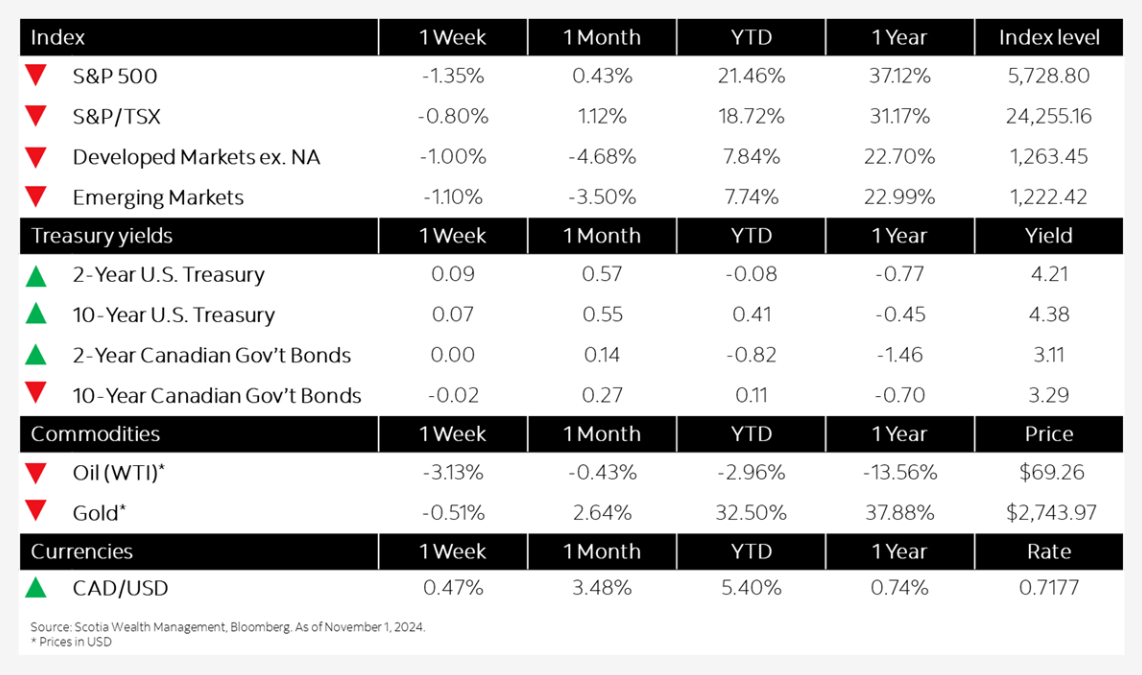
Market Watch: November 1
This week’s highlights
- Rate sensitive sectors pull broader index lower
- Bond market continues to see volatility amid fluctuating interest rate forecasts
- Canada’s economy stalled in August, likely grew 0.3% in September
- U.S. economic growth extends solid streak
- Eurozone expands faster than expected, raising hopes of soft landing
- In the news: Energy needs of AI could drive resurgence in nuclear power
Week in review
Rate sensitive sectors pull broader index lower



